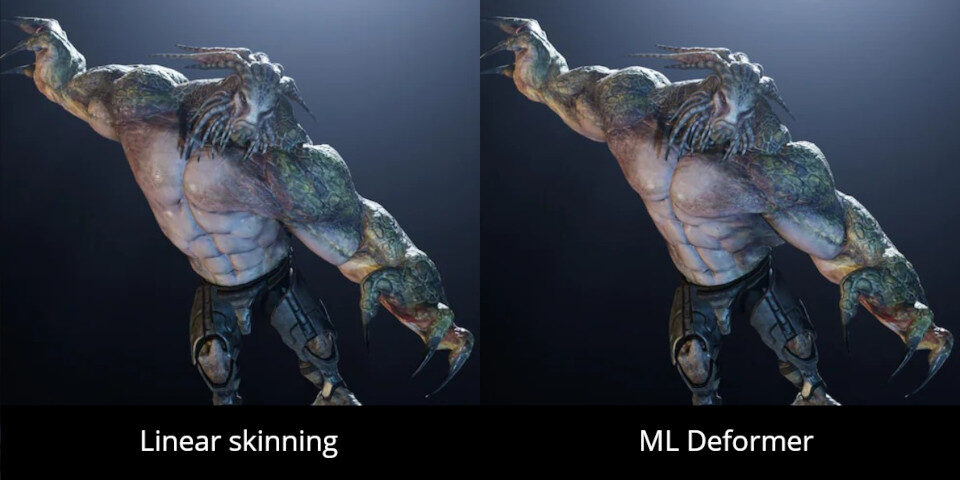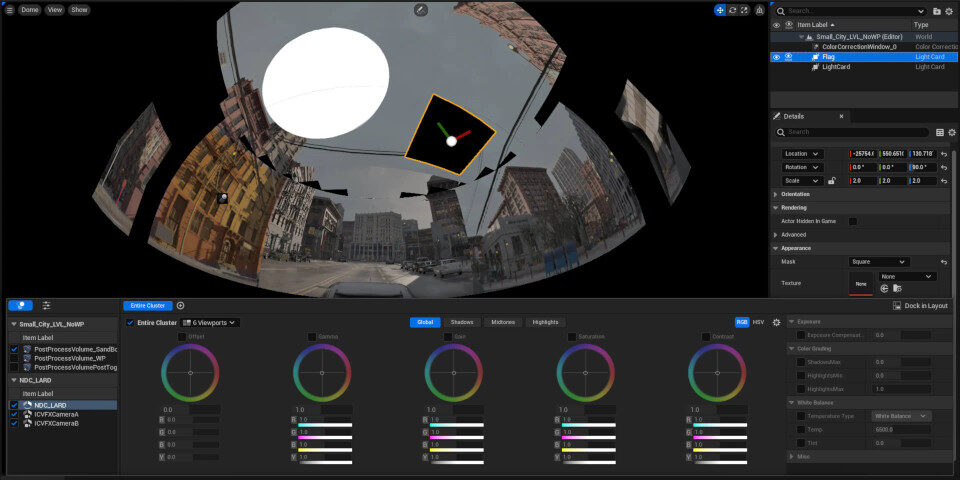Epic Games releases Unreal Engine 5.1
Epic Games has released Unreal Engine 5.1, the latest version of the game engine and real-time renderer.
The release improves performance and workflow of several of the major new toolsets introduced in the landmark Unreal Engine 5.0 update, including Nanite geometry virtualisation and dynamic GI system Lumen.
Animators get an experimental machine learning-based deformer framework that creates lightweight approximations of complex character rigs, removing the need to evaluate them at runtime.
Virtual production teams get a new dedicated in-camera VFX editor, improved colour correction workflow, and initial support for Nanite in nDisplay multi-screen set-ups.
Improvements to Nanite and Lumen
One important objective of Unreal Engine 5.1 is simply to improve workflow and performance of the new toolsets introduced in Unreal Engine 5.0, this year’s milestone update to the software.
Epic Games’ blog post describes the update as “laying the groundwork” for games using Nanite geometry virtualisation and dynamic global illumination system Lumen to run at 60fps.
Nanite also gets support for two-sided materials, and a new programmable rasterizer, making it possible to create material-driven animations via World Position Offset, such as leaves blowing in the wind.
The changes are complemented by support for the Two-Sided Foliage shading model in Lumen, making it possible to light and render foliage more realistically.
In addition, the new World Partition system now supports Large World Coordinates, enabling users to “create massive open worlds without loss of precision”, while the wider Hierarchical Level of Detail (HLOD) system now supports water rendering and streaming.

Experimental ML Deformer framework creates lightweight approximations of complex character rigs
Major new features in Unreal Engine 5.1 include the Machine Learning (ML) Deformer framework.
It can be used to create lightweight approximations of the deformations created by non-linear deformer systems on skinned mesh objects, removing the need to evaluate complex character rigs at runtime.
The implementation uses a free Maya plugin to train a machine learning model, which in turn runs in real time in Unreal Engine

New features for virtual production and broadcast VFX
Artists working in previs, virtual production and broadcast also get some significant new features, including a new dedicated in-camera VFX editor (shown above) and improved in-camera colour correction workflow.
The release also overhauls VCam, Unreal Engine’s virtual camera system, improves EXR playback, and introduces initial support for Nanite in nDisplay multi-display set-ups.
You can find a full list of changes via the links below.
System requirements and availability
Unreal Engine 5.1 is available now for 64-bit Windows, macOS and Linux.
Use of the editor is free, as is rendering non-interactive content. For games developed with the engine, Epic takes 5% of the gross royalties after the first $1 million generated by a title.
Read an overview of the features in Unreal Engine 5.1 on Epic Games’ blog
Read more about the new features in the online documentation for Unreal Engine 5.1
